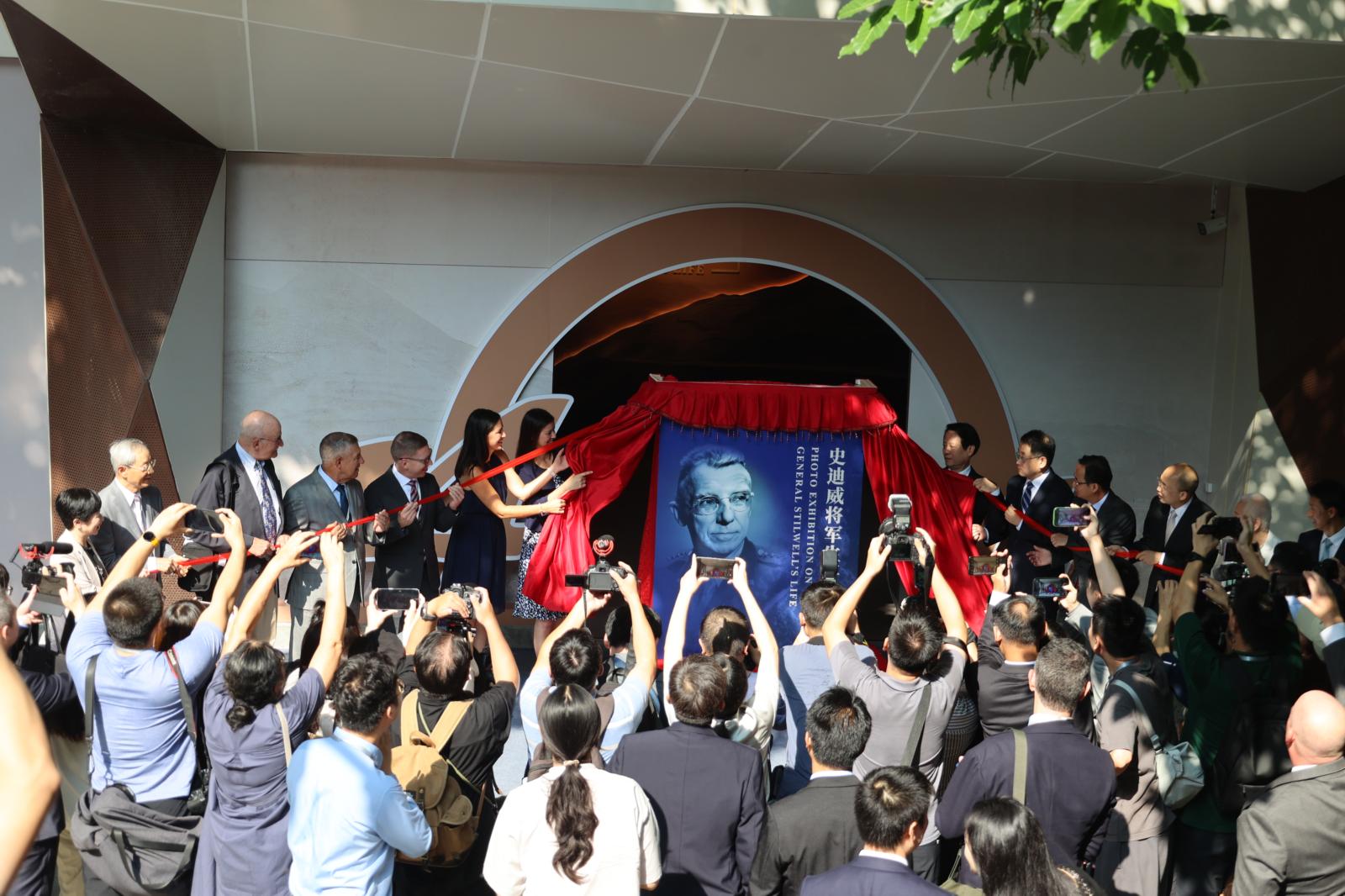品藏 印度兰姆伽训练营图册和徽章
《兰姆伽:“现在可以说了”》

“Victory through Knowledge” Badge
1994年南希·史迪威·伊斯特布鲁克捐赠图册
Photo book donated by Nancy Stilwell Easterbrook in 1994.
2008年查尔斯•彼得森捐赠徽章
Badge donated by Charles Peterson in 2008.
|解读·Details|
印度兰姆伽训练营图册《兰姆伽:“现在可以说了”》由兰姆伽训练营教官约翰·斯威尼编辑,共222页,由美国天主教出版社于1945年1月限量发行。图册用照片记录了二战期间在美军印度兰姆伽训练营训练中国军队的各种场景。
Ramgarh: "NOW IT CAN BE TOLD", A photo book of the Ramgarh Training Camp in India. Edited by John Sweeney, a trainer at the Ramgarh Training Camp, this 222-page album was published in a limited edition by Catholic Press in January 1945. It contains photos that document various scenes of the Chinese army being trained at the American-run Ramgarh Training Camp during World War II.
印度兰姆伽训练营“以智取胜”徽章,盾牌形铜质珐琅徽章。中间有手握火炬图案,两侧刻“以智取胜”4个汉字,下方刻有“victory through knowledge”英文。
Ramgarh Camp Badge: "Victory through Knowledge". This is a shield-shaped copper enamel badge. It features a torch in the center, with the Chinese characters "以智取胜" engraved on either side of the torch. The bottom of the badge has the English phrase "Victory Through Knowledge".
史迪威将军与兰姆伽训练营
General Stilwell and the Ramgarh Training Camp

图册《兰姆伽:“现在可以说了”》这样写道:“兰姆伽训练营的建立,离不开那位干劲十足、精力充沛的战区指挥官约瑟夫·史迪威将军。在中缅印战区尚处于起步阶段,尤其是在1942年缅北大撤退的黑暗时刻后,史迪威将军提出了这一中美联合训练计划。自成立以来,‘乔大叔’一直心系训练中心的运作,他对兰姆伽的持续关怀激励着这里的每一个人。为史迪威将军这样一位英勇战士效力,是我们的荣耀。在工作中,我们始终全力以赴,以回报他对我们的信任。”
The photo book Ramgarh: “NOW IT CAN BE TOLD” says: “To wiry, dynamic General Joseph W. Stilwell, Theater Commander, the Ramgarh Training Center owes its existence. For the idea of a Chinese-American training program was conceived by the General during the darkest days of the then-embryonic C.B.I. Theater—on the famous 1942 retreat from Burma. Since their inception, the activities here have always been close to ‘Uncle Joe’s’ heart—and his warm and continued personnel interest has been a never-failing source of inspiration and pride to the Ramgarh personnel. It is an honor to serve under a fighting soldier like General Stilwell. In our work here, we have done our best to justify the faith he has repeatedly shown in us.”
兰姆伽是印度的一个小镇,位于加尔各答西北300多公里处。一战时,英国在这里修建了一座兵营,曾关押过战俘。中国驻印军训练营就位于小镇周围大约30平方公里的范围内,训练中心设在镇上,其余的各种军事技术学校,如战车学校、通讯学校、工兵学校、指挥学校等,分散驻扎在小镇周边,彼此间有柏油或土质公路相连。此外,附近还附设各种训练场地,包括坦克和汽车驾驶训练场、武器射击靶场和各种战术演习场,还有医院、加油站等附属设施。
Ramgarh is a small town in India located more than 300 kilometers northwest of Calcutta. During World War I, the British built a military camp here that was once used to hold prisoners of war. The training camp for the Chinese army in India was situated within an area of about 30 square kilometers around the town. The training center was located in the town, while various military technical schools such as tank schools, communication schools, engineering schools, and command schools were scattered around the periphery and connected by asphalt or dirt roads. Additionally, there were various training grounds nearby, including tank and automobile driving training areas, weapon firing ranges, and tactical exercise fields. There were also auxiliary facilities like hospitals and gas stations.
1942年8月4日,史迪威将军飞抵兰姆伽主持训练工作。在开营初期,他以身作则,率先垂范,同时也给美国教官树立了教练的榜样。在此后的半年中,他7次往返于新德里和重庆,每次到印度,都要到兰姆伽训练营深入指导,每次一住就是几个星期。他身穿短衣短裤,头戴一顶一战时期的硬边帽来到训练场,耐心地纠正或做示范。因为史迪威将军平易近人的态度,赢得了士兵们的尊重,中国士兵称其为“乔大叔”。兰姆伽训练营于1944年春关闭。
On August 4, 1942, General Stilwell flew to Ramgarh to oversee the training operations. In the early days of the camp, he led by example and set a standard for American trainers. In the following six months, he made seven round trips between New Delhi and Chongqing. Whenever he came to India, he would go deep into the Ramgarh Training Camp to provide in-depth guidance and would stay for several weeks at a time. He would appear at the training ground wearing shorts and a short-sleeved shirt and a WWI-era hard-brimmed hat, patiently correcting or demonstrating. Known for his approachable demeanor, he was affectionately called "Uncle Joe" by the soldiers. The camp closed in the spring of 1944.













